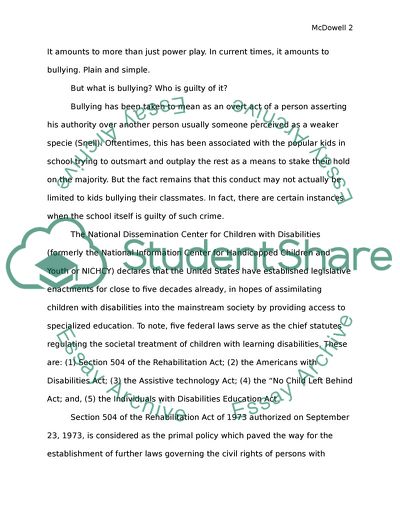Cite this document
(“What Schools Should Know About Bullying Essay Example | Topics and Well Written Essays - 1750 words”, n.d.)
Retrieved from https://studentshare.org/english/1437221-what-schools-should-know-about-bullying
Retrieved from https://studentshare.org/english/1437221-what-schools-should-know-about-bullying
(What Schools Should Know About Bullying Essay Example | Topics and Well Written Essays - 1750 Words)
https://studentshare.org/english/1437221-what-schools-should-know-about-bullying.
https://studentshare.org/english/1437221-what-schools-should-know-about-bullying.
“What Schools Should Know About Bullying Essay Example | Topics and Well Written Essays - 1750 Words”, n.d. https://studentshare.org/english/1437221-what-schools-should-know-about-bullying.


